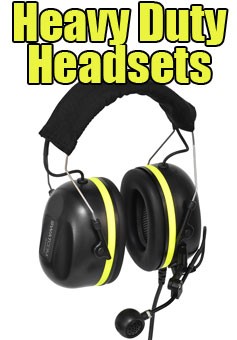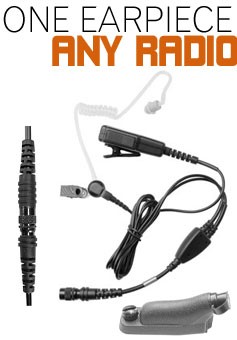
Choosing the right aviation headset is a crucial decision that can significantly impact a pilot's flight experience. It's an essential gear piece that not only ensures clear communication and navigational guidance but also provides the much-needed noise cancellation in the loud cockpit environment.
Whether you're a student pilot or an experienced professional, the right aviation headset can be a game-changer, enhancing safety, comfort, and overall flight experience. In this guide, we'll provide comprehensive insights to help you make an informed decision when purchasing your next aviation headset.
Importance of Sound Levels
In the cockpit, pilots are often subjected to high levels of ambient noise. This cacophony can range from the drone of the aircraft engine, the rustle of wind against the fuselage, to the noise generated by onboard equipment.
Amidst this, clear and uninterrupted communication with air traffic control or other crew members is of paramount importance. Miscommunication or missing vital information due to poor sound quality can lead to dangerous situations in-flight. Thus, a top-notch aviation headset is not just a nice-to-have accessory but an essential tool for ensuring effective communication.
These headsets are designed specifically to balance the reduction of ambient noise while optimizing the clarity of incoming transmissions, ensuring your safety and the success of your flights.
Impact of Substandard Headsets on Pilots' Hearing
Pilots that accumulate a significant number of flight hours often expose themselves to the constant hum of aircraft engines and onboard equipment.
If they choose less expensive headsets, which may not have the best noise canceling capabilities, this prolonged exposure to high decibel noise can lead to long-term hearing damage. Accumulating damage over time, pilots might experience symptoms such as tinnitus, a persistent ringing in the ears, or even hearing loss.
This could not only affect their quality of life but also their ability to perform their duties effectively. Investing in a high-quality aviation headset should not be seen as an unnecessary expenditure, but as a critical preventive measure to safeguard one's auditory health and career longevity.
Types of Noise Reduction
When it comes to curtailing cockpit noise, aviation headsets utilize three principal types of noise reduction technology – passive, active, and dynamic.
PASSIVE NOISE REDUCTION (PNR)
Passive Noise Reduction (PNR) headsets employ the most fundamental form of noise reduction - physically hindering unwanted sounds from reaching your ears. This is achieved by creating a barrier around your ears using ear cups and seals.
As PNR headsets need to form a protective seal around your ear to provide effective noise reduction, all models are over-ear designs as opposed to on-ear or in-ear versions. These headsets, while being the least technologically advanced, are also the most affordable options available in the market.
They serve as an entry-level choice for those seeking basic noise reduction without making substantial financial commitments.
ACTIVE NOISE REDUCTION (ANR)
Active Noise Reduction (ANR) headsets, sometimes referred to as Electronic Noise Canceling (ENC) headsets, require a power source, typically batteries situated in the earpieces or on the wires.
They use an ingenious process to monitor incoming sounds via a small microphone placed inside or outside the ear cup. Some high-end models even place microphones both inside and outside the ear cup for enhanced sensitivity.
The microphones in ANR headsets are primarily designed to counter the lower frequency noises generated by engines and turbulence. These noises typically fall within the 20Hz to 300Hz range of the spectrum. Higher frequency sounds are not reduced, allowing radio transmissions and on-board conversations to be audible.
When an ANR headset's microphone picks up a noise within its designed spectrum, it activates a small speaker to broadcast a sound wave at the same frequency as the disruptive noise but with a 180-degree phase difference.
In simpler words, the incoming soundwave and the outgoing soundwave cancel each other out, effectively eliminating the undesired noise.
DYNAMIC NOISE REDUCTION (DNR)
Dynamic Noise Reduction (DNR) headsets elevate the capabilities of ANR headsets by digitally eliminating unwanted noises from incoming signals.
By scanning for and isolating repetitive, identical noise signals within the transmission, DNR headsets are able to suppress these specific portions of the signal, effectively enhancing the clarity of audio communication. However, such sophisticated functionality is typically found only in the highest tier of ANR headsets, which are often more expensive.
Investing in a DNR headset is arguably a strategic move for any pilot who prioritizes pristine sound quality, clarity of communication, and ultimately, the safety and efficiency of their flights.
By understanding these three types of noise reduction, you can better determine the headset that best serves your flying needs and preserves your auditory health.
The Essential Boom Mic and Its Quality
An integral component of any aviation headset is the boom microphone. Positioned closely to the pilot's mouth, the boom mic captures their voice clearly while reducing the pickup of ambient cockpit noise.
This ensures their communication with air traffic control and fellow crew members is as clear and intelligible as possible.
The quality of the microphone significantly influences the clarity of this communication. A higher quality mic will generally include better noise cancellation, picking up less of the surrounding noise and focusing more on the pilot's voice. This leads to clearer, easier-to-understand transmissions, reducing the risk of misunderstandings that could compromise safety.
Moreover, a high-quality boom mic often features a flexible arm for perfect positioning and a windscreen to reduce distracting wind or breath noise. The durability of the mic is also essential because frequent adjustments can put strain on the component.
Therefore, investing in a reliable, premium quality boom mic is a sensible decision that can greatly enhance the overall functionality of an aviation headset and contribute to more efficient and safer flights.
Cable Plug Type
Understanding and selecting the correct cable plug type for your aviation headset is crucial, as this is what allows your headset to interface with your aircraft's communication system. The type of aircraft you fly primarily determines the cable plug type you need.
Most general aviation aircraft use dual male plugs, also known as PJ plugs. These include a 1/4 inch headphone plug and a .206 inch microphone plug - a standard that ensures compatibility with most general aviation aircraft.
If you fly Airbus, Boeing, or select ATR aircraft, you will need headsets with a single 5-pin XLR connector, also known as an "Airbus plug." This type of plug is unique to these aircraft and is designed for their specific communication systems.
For civilian helicopters, the standard is a single U174 plug. This plug is unique to helicopter communication systems, reflecting the different requirements and conditions in helicopter cockpits compared to general aviation aircraft.
It's important to note that if you fly multiple types of aircraft, you are not necessarily required to own multiple headsets with different plug types. You can potentially use a single headset across all of them by purchasing a plug adapter. These adapters can convert one type of plug to another, enabling your headset to interface with different types of aircraft. This can be a cost-effective solution for pilots who often fly various types of aircraft.



















